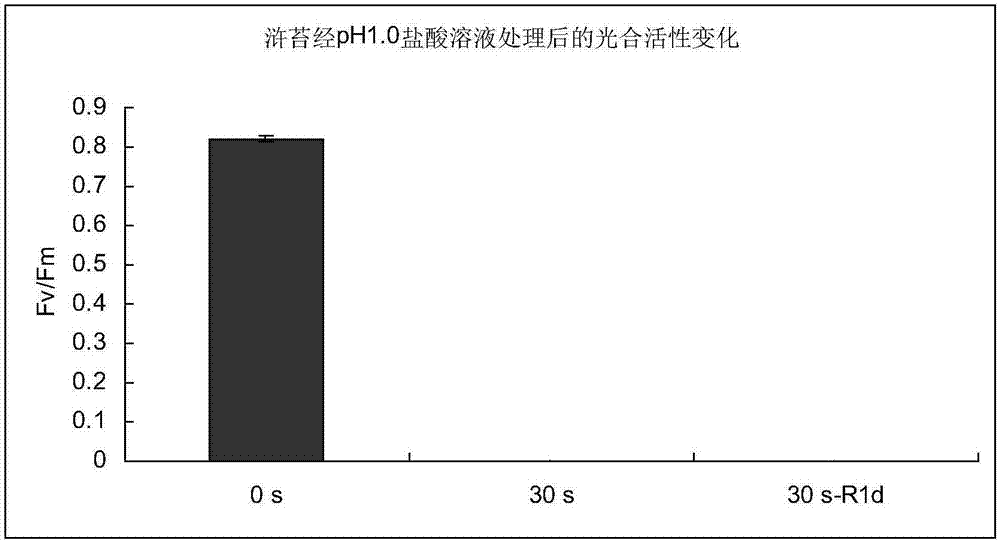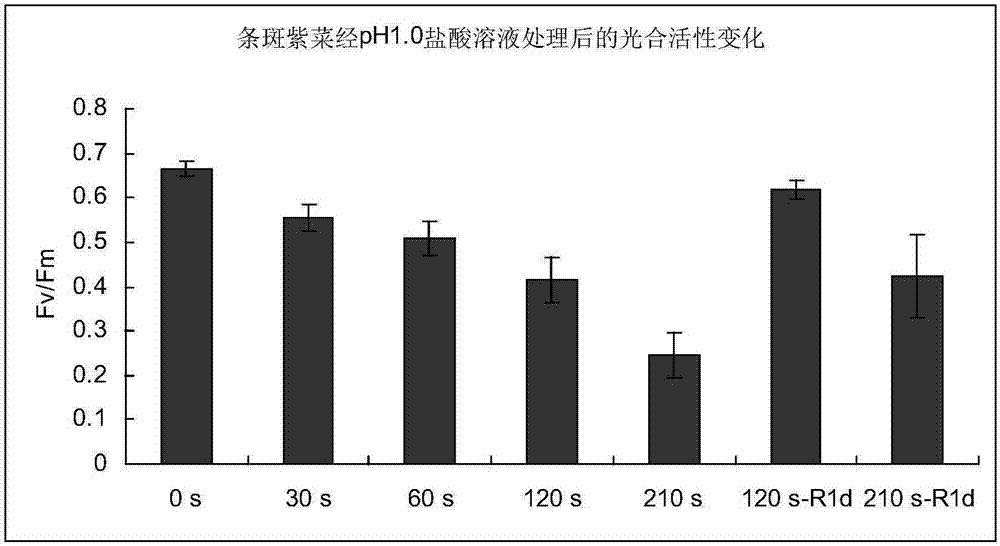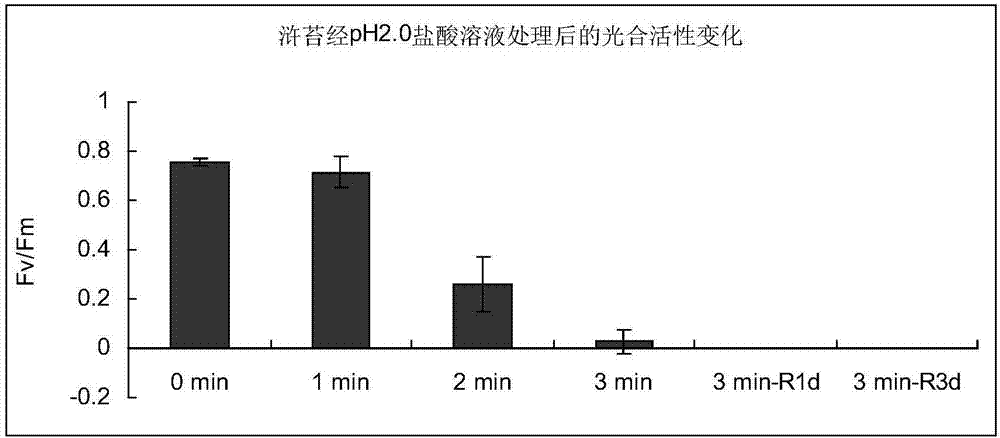Method for removing algae and enteromorpha on cultivation web curtain
A technology for breeding nets and Enteromorpha, applied in cleaning methods and utensils, cleaning methods using liquids, chemical instruments and methods, etc., can solve limiting factors such as excessive time, labor costs, affecting laver production, harvest and quality, and affecting Problems such as the growth of laver seedlings, etc., achieve the effects of short processing time, effective methods, and time and cost savings
- Summary
- Abstract
- Description
- Claims
- Application Information
AI Technical Summary
Problems solved by technology
Method used
Image
Examples
Embodiment 1
[0041] Embodiment 1, the hydrochloric acid solution that pH is 1.0, 2.0, 3.0 and 4.0 processes Enteromorpha and Porphyra zebra
[0042] 1. Add concentrated hydrochloric acid to natural seawater, and adjust the pH to 1.0, 2.0, 3.0 and 4.0 with a pH meter.
[0043]2. Put Enteromorpha and Porphyra zebra in good growth state in hydrochloric acid with a pH of 1.0, and use Dual-PAM to measure photosynthetic parameters. About 30s, the F of Enteromorpha algae v / F m Reduced to 0, take out the algal body and place it in natural seawater for recovery for 1 day, and its photosynthetic activity cannot be recovered. After 120s of Porphyra zebra treatment, F v / F m The photosynthetic activity of the algal body can be recovered after recovering for 1 day at this time; after treatment for 210s, F v / F m dropped to about 0.20, at this time after recovering for 1 day, the algae could not return to the normal level (see figure 1 and 2 ).
[0044] by the above figure 1 and 2 It can be ...
Embodiment 2
[0051] Embodiment 2, pH is that the sulfuric acid solution of 1.0 and phosphoric acid solution process Enteromorpha and Porphyra zebra
[0052] 1. Add concentrated sulfuric acid and concentrated phosphoric acid to natural seawater respectively, and adjust the pH to 1.0 with a pH meter.
[0053] 2. Put Enteromorpha in sulfuric acid solution and phosphoric acid solution with pH of 1.0 respectively, use Dual-PAM to measure photosynthetic parameters, and wait for the photosynthetic parameter F v / F m Take it out when it drops to 0 (about 30s), put it in natural seawater to recover, and its photosynthetic activity cannot be restored (see Figure 9 and 10 ).
[0054] by the above Figure 9 and 10 It can be seen that Enteromorpha dies after being treated with an acid (sulfuric acid or phosphoric acid) solution with a pH of 1.0 for 30 seconds.
[0055] 3. Put Porphyra zebra in sulfuric acid solution and phosphoric acid solution with a pH of 1.0 respectively, use Dual-PAM to meas...
Embodiment 3
[0057] Embodiment 3, pH is that the sulfuric acid of 2.0 and phosphoric acid solution process Enteromorpha and Porphyra zebra
[0058] 1. Add concentrated sulfuric acid and concentrated phosphoric acid to natural seawater respectively, and adjust the pH to 2.0 with a pH meter.
[0059] 2. Put Enteromorpha in sulfuric acid solution and phosphoric acid solution with a pH of 2.0, and use Dual-PAM to measure photosynthetic parameters. v / F m Take it out when it drops to 0 (about 3 minutes), and put it in natural seawater to recover for 1 day and 3 days. After the recovery treatment, the photosynthetic parameters were measured using Dual-PAM, and it was found that the photosynthetic activity of Enteromorpha could not be recovered even after 3 days in natural seawater (see Figure 13 and 14 ).
[0060] by the above Figure 13 and 14 It can be seen that Enteromorpha dies after being treated with an acid (sulfuric acid or phosphoric acid) solution with a pH of 2.0 for 3 minutes....
PUM
 Login to View More
Login to View More Abstract
Description
Claims
Application Information
 Login to View More
Login to View More - R&D
- Intellectual Property
- Life Sciences
- Materials
- Tech Scout
- Unparalleled Data Quality
- Higher Quality Content
- 60% Fewer Hallucinations
Browse by: Latest US Patents, China's latest patents, Technical Efficacy Thesaurus, Application Domain, Technology Topic, Popular Technical Reports.
© 2025 PatSnap. All rights reserved.Legal|Privacy policy|Modern Slavery Act Transparency Statement|Sitemap|About US| Contact US: help@patsnap.com



